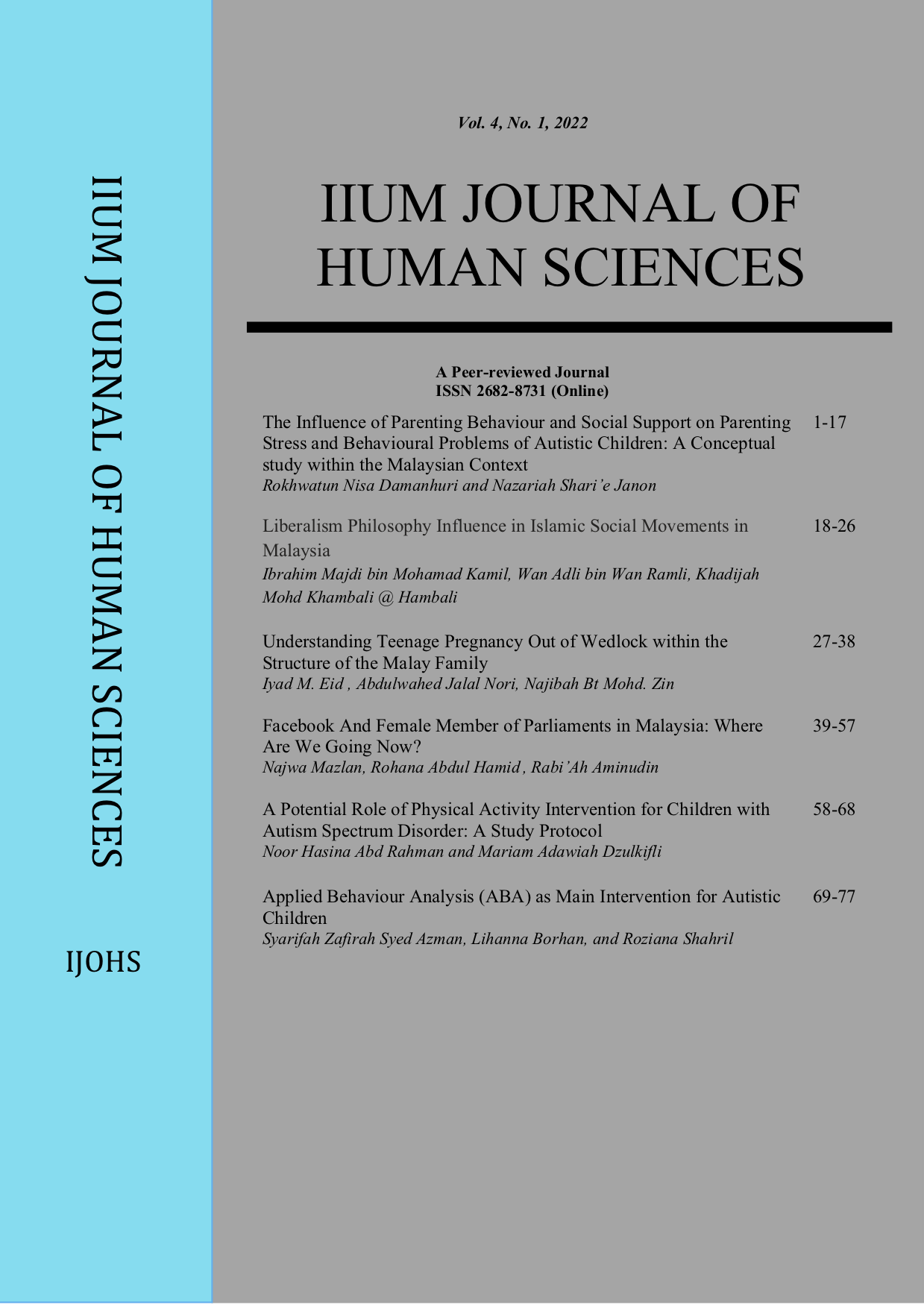Understanding Teenage Pregnancy Out of Wedlock within the Structure of the Malay Family
DOI:
https://doi.org/10.31436/ijohs.v4i1.227Keywords:
teenage pregnancy, Muslim Malay family, parent-daughter relationshipAbstract
This paper discusses family as a risk factor in teenage pregnancy out of wedlock in the Muslim Malay community in Malaysia. Using a qualitative approach, this case study conducted in-depth semi-structured interviews with thirty Muslim Malay teenagers who experienced illegal pregnancy. The research took place in two organizations operating as rehabilitation centres to assist the girls overcome the traumatic experience and lead more productive life in the future. Collected data were transcribed and analysed by thematic analysis method. The findings showed that poor parent-daughter relationship contributed to the occurrence of teenage pregnancy. Parents were physically and emotionally separated from their daughters because of busy work life, fighting, divorce or negligence. It was also found out that parents lacked Islamic knowledge and practice that they did not treat or upbring their daughters according to the Islamic values and principles. Funded by the Fundamental Research Grant Scheme (FRGS), this study seeks to design and implement a social framework to understand the roots of this problem and create effective solutions. It is the first output focusing on one of the factors causing teenage pregnancy. The whole research project will be documented in a book elaborating on other factors and reflecting on the impact of this social problem on the Muslim Malay community and Malaysian society as a whole. The book will also present rational and systematic control mechanisms to minimize this social illness.










